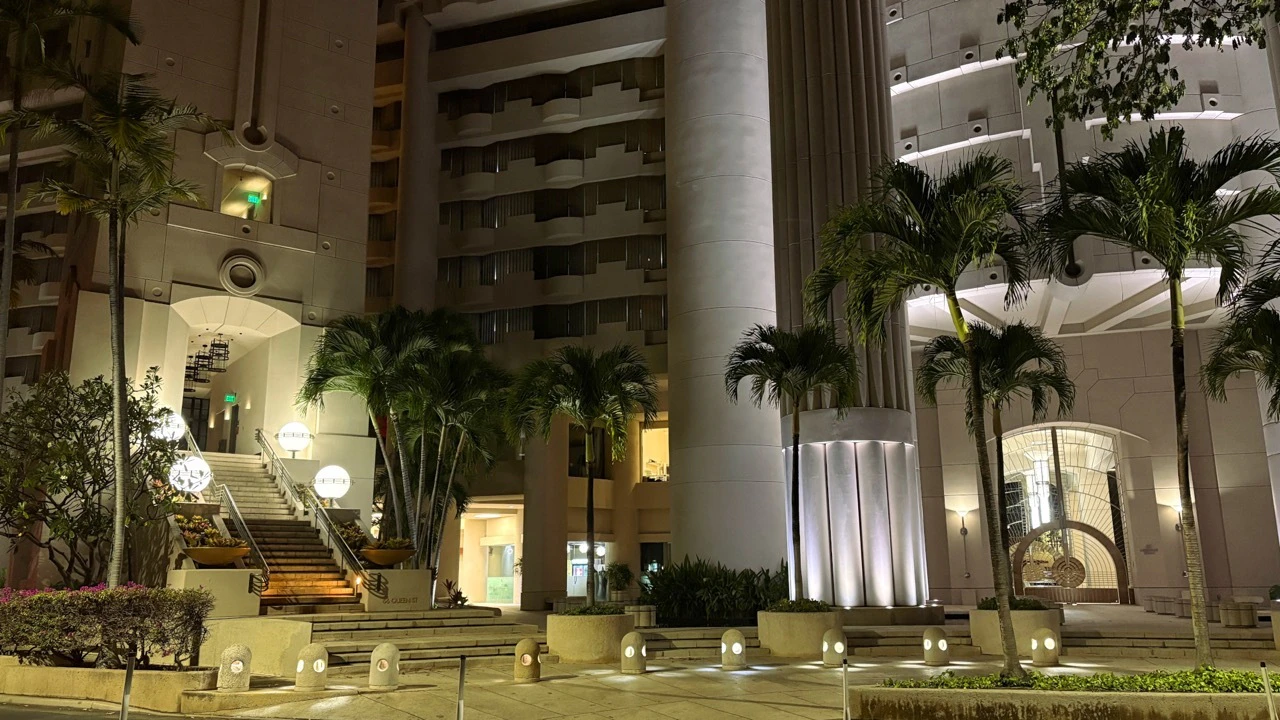Did you know that the original Royal Hawaiian Hotel wasn’t in Waikīkī?
In 1865, following a public meeting, a committee was formed to discuss the dramatic increase in steamship arrivals in Honolulu, and the dire need of clean, classy and dependable accommodations to lodge prominent visitors. Despite widespread interest, no clear solution was presented.
In the spring of 1870, the subject of a world-class hotel was brought up again in the King’s cabinet with a suggestion that private parties loan money to assist the government in building a hotel. Nothing came of the discussion until about six months later when King Kamehameha V stated, “I think favorably of the government building a hotel.”
After much discussion, the Legislative Assembly approved the measure, and work began in May 1871 on the corner of Richards Street, between Beretania and Hotel Streets. On February 29 of the following year, the Hawaiian Hotel held its grand opening with a “subscription ball,” for which tickets cost $5 per person.
Upon opening, the grand hotel boasted forty rooms, gas lighting throughout, and water carried to every room in the building. As a significant convenience, bathrooms with both cold and warm water, as well as water closets (toilet rooms), were available on each floor. The bridal chamber was the exception, however, with a private bath and water closet within.
The hotel quickly emerged as a vital social hub, hosting parties and meetings every week, including the very first gathering in April to plan the inaugural Commemoration of Kamehameha I Celebration on June 11 of that year.
Almost from the beginning, people have claimed there were hauntings in the hotel. In 1877, the building was closed for repairs to the hotel’s gas works. However, according to the local newspaper, witnesses reported seeing a ghost wandering the halls and corridors, as well as hovering on the verandas.
After a few years, the name was changed to the Royal Hawaiian Hotel. Some say the King felt that the new name would give the hotel a regal feel, but the first mention of the new name in Hawaiʻi’s newspapers dates back to 1880.
The government sold the property to a private investor in 1897, and the following year, a seaside annex to the hotel opened in Waikīkī on the property of what was once Helumoa, a great coconut grove. It’s on this property that the new Royal Hawaiian Hotel, also known as the “Pink Palace,” was built in 1928.
The original hotel was converted to a YMCA in 1917 for use by the military, to house and entertain Army and Navy personnel through World War I. Then, due to disrepair and termite infestations, the building was torn down in 1926. Two years later, the building was redesigned and rebuilt to become the Armed Services YMCA.
Now listed as the No. 1 Capitol District Building, it houses the Capitol Modern (formerly the Hawaiʻi State Art Museum) and other state offices. But even today, people who work in the building talk about chicken skin moments.
In 2019, I was invited to share some spooky stories with some office staff in the building. While the storytelling was fun, I was surprised by a few staff members who had their own stories about the former hotel site.
Staff working late at night have reported the unmistakable sound of footsteps echoing across empty floors, often accompanied by a chilling sense of being watched. In some cases, lights flicker or shut off completely, only to power back on without explanation.
One of the most persistent stories involves the ghost of a woman drifting through the halls. Those who have seen her describe a glimpse of a woman wearing a long dress, just in their peripheral view, but when they turn to look, she vanishes. Some say she appears lost, as if she were searching for something, or someone.
A few longtime employees have even reported feeling sudden temperature drops or experiencing a heavy, inexplicable sadness in certain offices and hallways.
Though no definitive identity has ever been linked to the mysterious woman or the cause of the phenomena, the stories persist, passed quietly between coworkers and remembered each time the building’s silent corners seem just a little too quiet. Although the building has undergone dramatic changes from its original design and purpose, the haunting remains.





